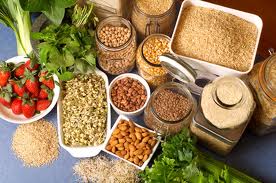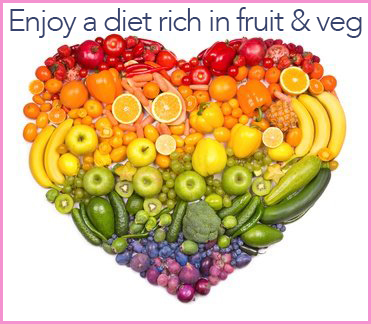Halloween Healthy Treats: A Ghoulish Feast

Halloween Healthy Treats….Boo! Halloween is just around the corner, and it’s time to spookify your snacks without scaring away your health-conscious habits. As a dedicated dietitian and the founder of 121 Dietitian, I’m here to share some devilishly delightful and nutritious Halloween treats that will have both kids and adults howling for more. Reduce reaching for those toxic sugary sweets and hello to a spooktacular array of wholesome and delicious goodies that are easy to prepare and frightfully fun to eat. Let’s dive into the cauldron of creativity and cook up a Halloween feast that will leave your taste buds spellbound! 1. Bobbing for Apples: A Classic Halloween Tradition with a Healthy Twist A great favourite with us kids of the 70’s! Bobbing for apples. This is a timeless Halloween game that can be turned into a healthy treat. Instead of sugary treats, my mum would fill a tub with water and add fresh, crisp apples. I did the same for my kids and no doubt they will hopefully continue the tradition! Apples are packed with fibre and essential vitamins, making them perfect for a Halloween healthy game. Encourage the kids to enjoy the natural sweetness of the apples while having a ghostly good time bobbing for these fruity delights. 2. Celery Ants on a Log: A Creepy-Crawly Snack to Delight Your Guests Create a spooky sensation with celery ants on a log. Slice celery sticks into manageable pieces and fill the groove with either cream cheese, natural peanut butter or almond butter. Top it off with raisins, resembling ants crawling on a log. Celery provides a satisfying crunch, while nut butter adds healthy fats and protein, making this snack both eerie and nutritious. 3. Haunted Veggie Platter: A Garden of Goodness for halloween healthy treats Transform ordinary veggies into a haunted veggie platter. Use cookie cutters to create ghost and bat shapes from slices of cucumber, bell peppers, and carrots. Arrange them alongside cherry tomato eyeballs and dip them in hummus or Greek yogurt-based dip (easy to whizz up yourself in one of my favourite kitchen gadgets – Magimix 5200XL). Not only is this platter visually captivating, but it also offers a variety of vitamins and minerals. 4. Fruit Kebabs: A Colourful and Wholesome Delight Thread chunks of vibrant fruits such as strawberries, kiwis, and oranges onto skewers to create vibrant fruit kebabs. For an extra special touch, use a small cookie cutter to shape melon pieces into stars or moons. These kebabs are not only visually appealing but also a great source of antioxidants and natural sugars, providing a healthier alternative to sugary sweets. 5. Creepy Crudité Cups: Individual Veggie Delights Serve individual crudité cups filled with an assortment of fresh vegetables like cherry tomatoes, baby carrots, and cucumber slices. Pair them with a tasty yogurt-based dip for a ghoulishly good snack. These portioned treats are perfect for Halloween parties and ensure that everyone gets their share of nutritious nibbles. 6. Hangman Apple for halloweeen healthy treats Need to burn up any more kcals??? If so then this one is a real work out for the family! Apples being the season fruit is the fruit most commonly used but you could do this with carrots, tomatoes or even bananas! Get your choosen victim (fruit or veg!) and tie it up, hang from a pin or nail from the middle of a door way. Only using your “fangs” to take turns in making that fatal bite! The first person to take a bite wins! 7. Don’t forget the proteins! Ok Ok I’ll stop now!!! Conclusion This Halloween, why not celebrate the spooky season with creativity and a dash of nutritional goodness. By incorporating these healthy and fun treats into your festivities, you can enjoy the holiday without compromising your health goals. Remember, it’s not about avoiding treats altogether but choosing smarter options that are both delightful and nutritious. Have a fang-tastic Halloween filled with wholesome treats, laughter, and memorable moments. Happy haunting and healthy eating! If you want to book your programme TODAY we would love to help you. You can book a 121 Dietitian Programme today by clicking on the link below If you have enjoyed this blog we would love you to share this with your family and friends on your social media channels. Do visit our YouTube Channel for more on keeping your health optimal. If you are interested in how I overcame my Thyroid Autoimmune Condition do check out the About section below Before you go please check out our 121 Dietitian Shop created specifically for optimising your health. Gillian x
Constipation Relief

5 Evidence-Based Constipation Home Remedies by a Registered Dietitian Constipation is a common issue that affects one in five people following a Western diet. If you have ever suffered with this you will know how unpleasant the feeling is. Maybe you are currently suffering with ongoing constipation and are in need of some guidance, so please read on. I’m Gillian Killiner, a registered dietitian with 26 years of experience in helping thousands of individuals with their dietary and health needs. In this blog post, I share five evidence-based tips to assist with constipation. But first, let’s define constipation. What is Constipation? Constipation occurs when you haven’t had a bowel movement for more than three times in a week. You can assess your bowel movements by using a stool chart to evaluate consistency and type. Typically, constipated stools are hard, small lumps, or pebble-like Type 1 and 2. What is a normal bowel movement frequency as defined by the NHS? “It is normal to pass a stool everyday up to every 3 days; stools should be soft and easy to pass. You should not need to strain to pass a stool. Some people pass a stool once a day and some twice these are both normal.” So what factors in a Western diet contribute to constipation? Dietary Factors 1. Hydration for Constipation is Key One of the first and most crucial tips for relieving constipation is to stay adequately hydrated. Many people underestimate the importance of drinking enough fluids. It’s easy to forget to drink when we switch off our thirst receptors. To combat this, keep a drink, such as a glass or bottle of water, with you throughout the day. Aim for 1.5 litres minimum. You can also include herbal teas and coffee, but limit them to no more than four cups a day, and avoid making them overly strong. Excessive caffeine can contribute to dehydration, which worsens constipation. 2. Load Up on Fruits and Vegetables Consuming an ample amount of fruits and vegetables is another essential strategy for relieving constipation. Begin your day with a breakfast rich in vegetables or add fruits to your cereal. Incorporate fruits and vegetables into your meals and snacks as much as possible. Variety and color in your diet are key. These foods provide essential antioxidants, vitamins, minerals, and fibre, all of which promote healthy bowel movements. Don’t forget to consider the fibre content in your diet, which can come from sources like nuts, seeds, beans, pulses, and high-fiber grains. Aim for an average of 30 grams of fiber daily to keep your bowels moving smoothly. 3. Dried Fruits as a Natural Solution Dried fruits like prunes, dates, and raisins can also be valuable additions to your diet when dealing with constipation. They are rich in fiber and natural sugars, which can help stimulate bowel movements. Including these dried fruits in your diet can be a tasty and effective way to alleviate constipation, just keep to small portions. Lifestyle Factors 4. Embrace Exercise for Constipation Exercise plays a vital role in maintaining regular bowel movements. It helps reduce transit time, meaning food moves through your digestive system more quickly. This faster gut transit leads to improved bowel regularity. Additionally, exercise promotes the growth of beneficial gut bacteria, strengthening abdominal muscles, and overall gastrointestinal health. Aim for regular physical activity to reap these benefits. 5. Listen to Your Body Lastly, don’t ignore your body’s signals when it’s time to go to the toilet. Often, the morning after breakfast is the most opportune time to have a bowel movement. However, due to our busy lives and schedules, we sometimes ignore these cues. It’s essential not to hold onto stool if you feel the urge to go. Ignoring these signals can have negative long-term consequences. If you find yourself straining during bowel movements, consider changing your sitting position on the toilet. Squatting, for example, can create a more natural alignment for easier passage of stool. Constipation Conclusion Constipation is a common issue, but it can be effectively managed with evidence-based strategies. These five tips, including staying hydrated, consuming ample fruits and vegetables, incorporating dried fruits, embracing exercise, and listening to your body, can make a significant difference in your digestive health. Remember that there are numerous dietary, lifestyle, and supplement options available to alleviate constipation. The tips mentioned here provide a solid starting point. There are many more additional strategies out there so do get in touch if you are struggling. Often we see patients with alternating constipation and diarrhoea, which is so hard to live with. Not being able to predict how your day will go and fearful of your bowels not working smoothly can really impact on your quality of life. Our GUT Health programme is the best programme which can fix you in 6 weeks or less. Do check out my other blogs and my videos on my YouTube channel covering various aspects of diet and health, so don’t forget to like, subscribe, and share my content. Until next time, take care! If you want to book your programme TODAY we would love to help you. You can book a 121 Dietitian Programme today by clicking on the link below If you have enjoyed this blog we would love you to share this with your family and friends on your social media channels. Do visit our YouTube Channel for more on keeping your health optimal. If you are interested in how I overcame my Thyroid Autoimmune Condition do check out the About section below Before you go please check out our 121 Dietitian Shop created specifically for optimising your health. Gillian x
High Blood Pressure Diet – Top Tips

Blood Pressure Diet What is hypertension and why is a Blood Pressure diet so important? It is something many of us never think about, but it keeps you alive and it is important to stay in a healthy range! In this blog, we cover all you need to know and how to improve it. Blood pressure is when your heart pumps blood through your arteries, putting pressure on the artery wall. This naturally goes up and down with your normal daily activities. A normal blood pressure level is less than 120/80 mmHg What do blood pressure numbers mean? Blood pressure is recorded with two numbers: The first number is called systolic blood pressure. This is the pressure in your arteries when your heart beats. The second number is called diastolic blood pressure. This measures the pressure in your arteries when your heart rests between beats. If you have never had this checked yourself you may have seen a Dr on TV using a cuff and stethoscope on patients to listen to their arm! This is checking blood pressure. An electronic blood pressure monitor is the up-to-date way of checking your home blood pressure: What is High Blood Pressure? High blood pressure, also known as hypertension, is when your blood pressure is higher than normal. The higher your blood pressure means you are at greater risk of heart disease heart attack heart failure stroke Not what you want to be hearing. High blood pressure also increases your risk of developing the following health problems Kidney disease Vision problems, retinal changes Sexual dysfunction, such as erectile dysfunction Circulatory problems, including peripheral artery disease (leg pain when walking) Atrial Fibrillation – Abnormal heart rhythms Vascular dementia Aortic Aneurysm – vessel swelling in the abdomen So how common is High Blood pressure? Nearly 1/2 the population in America have high blood pressure and in the UK it is not far behind with 1 in 3 adults (around 16 million) having high blood pressure (a reading of 140/90 or higher). This rises to at least 1 in 2 over-65s. Unfortunately, most people will never know they have high blood pressure as it is known as the silent killer. If you do have the following symptoms: Headaches, anxiety, nosebleeds, and palpitations do get them checked out as these can be signs of high blood pressure. Why do we get High Blood pressure? The top risk factors for high blood pressure include: Being overweight/obese – The more you weigh the more blood flow is required to the tissues to supply nutrients and oxygen. Blood vessels increase and so does the pressure inside your arteries. Too much salt (sodium) in your diet – your body retains fluid when there is too much sodium in your diet. This causes the arteries in your body to narrow. Both increase blood pressure. Too little potassium in your diet -Potassium is important to help balance the sodium in your cells. Potassium causes the smooth muscle cells in your arteries to relax, which lowers blood pressure. Not being physically active – Exercise lowers blood pressure by increasing blood flow through all the arteries of the body. This leads to the release of natural hormones and cytokines relaxing blood vessels. Lack of physical activity also increases the risk of being overweight which as we know now is a risk factor in itself. What lifestyle change lowers blood pressure the most? Weight loss for high blood pressure Weight loss is one of the most effective lifestyle changes for controlling blood pressure. If you’re overweight or have obesity, losing even a small amount of weight can help reduce blood pressure. Blood Pressure diet – Nutrient-rich foods Many people embark on trying to lose weight for multiple reasons, many due to health, and they hit a brick wall after a few weeks or months. Following macros, friends’ recommendations, or very kcal-restricted diets. They start with the best of intentions, but if they are not focused on the long game the diet becomes boring, and tasteless and can lead to far more problems than they started with. I have written about this in other blogs and also have several videos on my YouTube channel about weight loss, macros and intuitive eating. The focus for blood pressure is getting key nutrients in each day potassium, calcium and magnesium are just a few. These nutrients help control blood pressure. While building these in, reducing sodium, saturated fat and added sugars is critical. Salt/Sodium and High Blood Pressure Salt/sodium intake is directly correlated to high blood pressure and is found in so many processed foods – both sweet and savoury. Adults should eat no more than 6g of salt a day (2.4g sodium) – that’s around 1 teaspoon in all the foods and fluids you consume. Children aged: 1 to 3 years should eat no more than 2g salt a day (0.8g sodium) Bacon, sausages, ham, meat pies, sausage rolls, pizza, crisps, bread….. are all high-salt processed foods. One slice of pan-fried pork bacon alone has 194 milligrams of sodium! Thankfully there are no special foods required to reduce your blood pressure, just focus on eating a wide range of vegetables, fruits, and whole grains. Including low-fat dairy products, fish, poultry, beans, nuts, and unrefined oils. 121 Dietitian programmes are created especially for you to ensure you get all of the correct nutrients and still make it tasty and enjoyable lifelong. How did we design our Blood Pressure Diet? DASH The DASH eating plan was designed from the Dietary Approaches to Stop Hypertension clinical study funded by the National Heart, Lung, and Blood Institute in 1997. This study found that populations who consume diets rich in vegetables and fruits have a lower blood pressure than those whose diets are low in vegetables. In addition to fruits and vegetables, dietary fibre, potassium, calcium, magnesium, and protein were all essential. All these important nutrients are the cornerstone of our 121 specially designed programmes! Drinking less alcohol Having more than two drinks per day